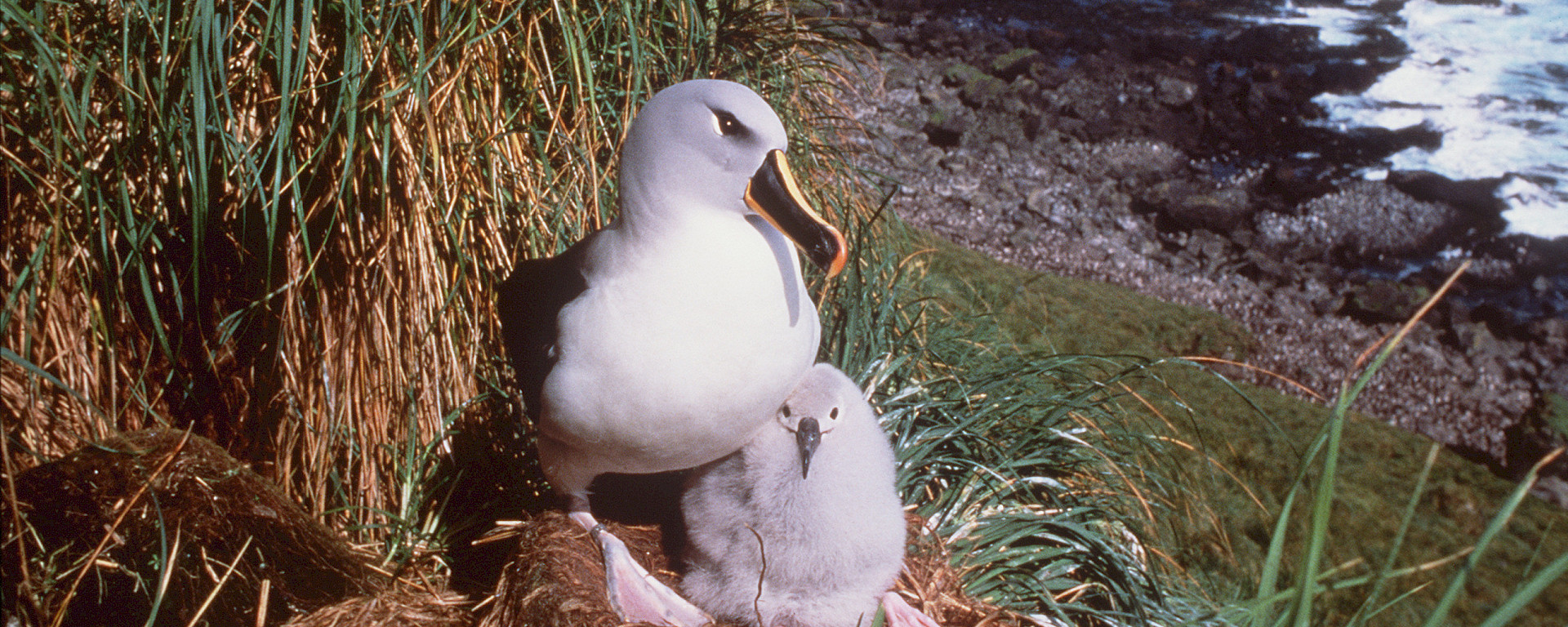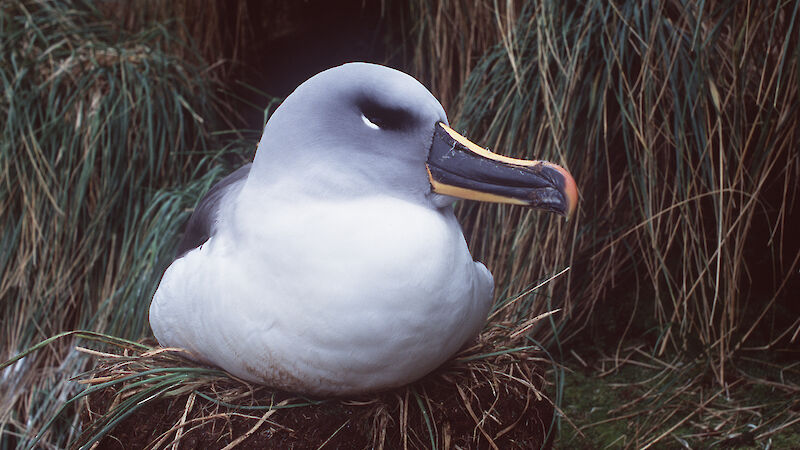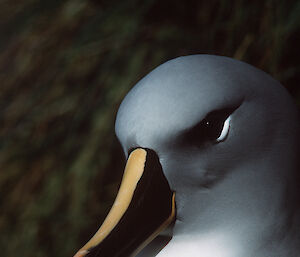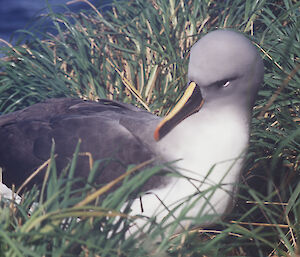Scientific name: Diomedea chrysostoma
Physical description
Grey-headed albatross have a 2.2 metre wingspan, a white body, a bluish grey head and neck, and a dark grey back and tail.
Distribution and abundance
Grey-headed albatross breed on many sub-Antarctic islands. The main populations of this species are in the South Atlantic sector of the Southern Ocean, about 80,000 pairs breed on South Georgia, but about 10,000 pairs breed on Campbell Island and only about 100 pairs on Macquarie Island. They tend to remain in subantarctic waters for much of the year.
Conservation status: endangered with population trends decreasing
The conservation status of grey-headed albatross is of concern as they are caught on long-lines in the Southern Ocean. Some populations are threatened as the number of birds caught on long-lines is a significant proportion of the population. Squid fisheries may also impact on the population in some areas.
Breeding
The nest sites and structure and timing of the reproductive cycle are similar in grey-headed and black-browed albatross. The two are often associated together in the same colonies, or on the same breeding islands.
The nest of a grey-headed albatross is a cone of mud, lined with grasses. Grey-headed albatross generally breed every two years: if a chick is successfully reared in one season, the parents will not breed the next year.
All albatross lay only one egg. The egg is laid in mid-October and hatches in mid-December (mid to late December on Macquarie Island). The male incubates the egg for the first 70 days, which is almost the total incubation period.
The chick takes about three to four days to chip out of the egg and is then guarded for about three weeks.
Fledging and departure is between mid-April and early June. The peak of departure is mid-May. Some grey-headed albatross on Macquarie Island are at least 36 years years old, (they had been banded as adults). The youngest breeding bird was seven years old, and the earliest return to the colony was at six years but it did not breed that year.
Diet and feeding
Grey-headed albatross feed while on the sea surface. They eat fish and squid and to a lesser extent, crustaceans. Lampreys appear to be important in the diet of the young birds being fed by their parents.





